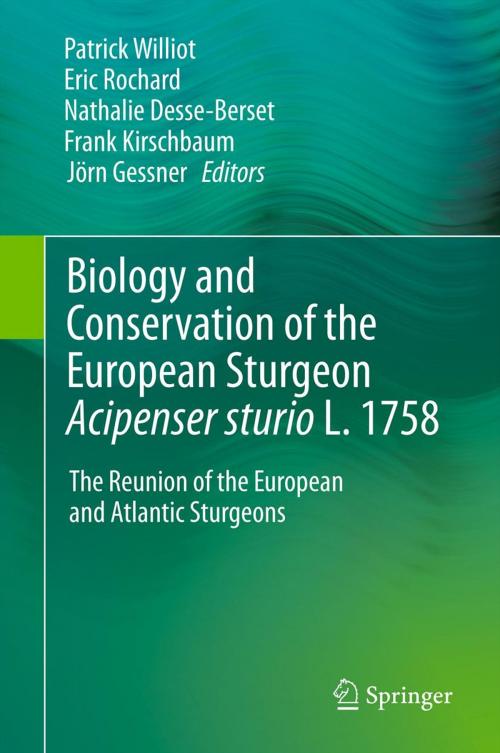Biology and Conservation of the European Sturgeon Acipenser sturio L. 1758
The Reunion of the European and Atlantic Sturgeons
Nonfiction, Science & Nature, Science, Biological Sciences, Ecology, Zoology, Nature| Author: | ISBN: | 9783642206115 | |
| Publisher: | Springer Berlin Heidelberg | Publication: | August 24, 2011 |
| Imprint: | Springer | Language: | English |
| Author: | |
| ISBN: | 9783642206115 |
| Publisher: | Springer Berlin Heidelberg |
| Publication: | August 24, 2011 |
| Imprint: | Springer |
| Language: | English |
The book aims at synthesizing our current knowledge of Acipenser sturio and its management. This species, one of the most widespread sturgeon species all over Western Europe ranging from the Black Sea to the Baltic, is now on the verge of extinction. Major aspects of its biology and management, including mismanagement, are provided in a historic perspective. Similarly, the changes in the restoration programs (in situ and ex situ) initiated in France and Germany are presented. As the species occurred in sympatry with Acipenser oxyrinchus in Germany and Poland and very recently in France as well, a brief outlook on restoration-management programs of A. oxyrinchus are also provided for both North America and Northern European countries, namely Germany and Poland. As conservation-restoration actions go beyond scientific issues, non-governmental stakeholders and marine professional fishermen’s organizations have also been asked to contribute, and the key role of a French-German cooperation plan is underlined. A part of the book is devoted to perspectives. Illustrations of the European sturgeon, mainly in photographs, but also in stamps and paintings, are presented.
The book aims at synthesizing our current knowledge of Acipenser sturio and its management. This species, one of the most widespread sturgeon species all over Western Europe ranging from the Black Sea to the Baltic, is now on the verge of extinction. Major aspects of its biology and management, including mismanagement, are provided in a historic perspective. Similarly, the changes in the restoration programs (in situ and ex situ) initiated in France and Germany are presented. As the species occurred in sympatry with Acipenser oxyrinchus in Germany and Poland and very recently in France as well, a brief outlook on restoration-management programs of A. oxyrinchus are also provided for both North America and Northern European countries, namely Germany and Poland. As conservation-restoration actions go beyond scientific issues, non-governmental stakeholders and marine professional fishermen’s organizations have also been asked to contribute, and the key role of a French-German cooperation plan is underlined. A part of the book is devoted to perspectives. Illustrations of the European sturgeon, mainly in photographs, but also in stamps and paintings, are presented.















